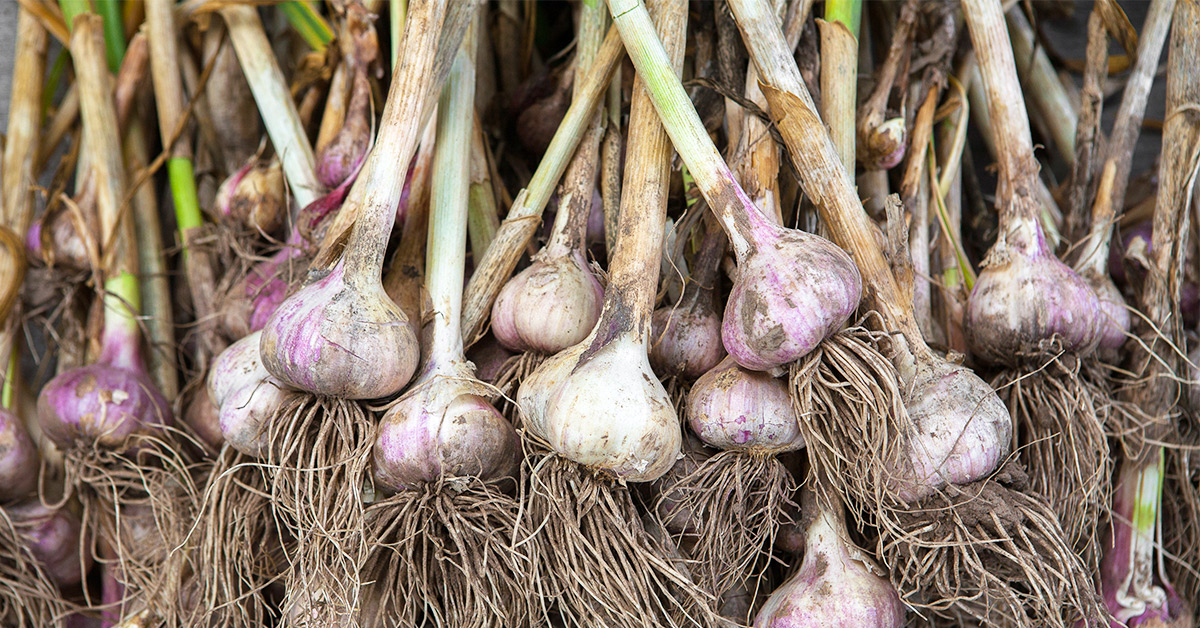WHAT HAPPENS TO OUR BODY WHEN WE CONSUME PROTEIN
The health benefits of it!

The scientific name of garlic is Allium sativum, originating from Central Asia, where it is found in the wild. It is a perennial herb with a multiple bulb, consisting of 8-14 oval-shaped cloves.
There are numerous varieties of garlic, but in our country, the white or common variety is cultivated, which has great adaptability to various growing conditions and environments. Elsewhere, the pink and red varieties are grown, which are more resistant to cold.
The characteristic smell of garlic is due to the presence of volatile substances (essential oils) rich in sulfur compounds, known as allicin, which are released when garlic comes into contact with air.
Garlic has been used since ancient times in folk medicine, both in China and Ancient Greece.
Historical references to garlic include those by Dioscorides, Aristophanes, and Herodotus. It is said that athletes participating in the ancient Olympic Games consumed a clove of garlic before their events to enhance their performance.
The Egyptians prepared garlic-based remedies to combat headaches, physical weakness, and sore throats as early as 1500 BC.
In ancient India and China, garlic was used as a medicine for various ailments, possibly as early as 3000 BC.
Raw garlic consists of 59% water, 33.06% carbohydrates, 6.36% protein, and 0.5% fat. It is rich in vitamins, minerals, and trace elements such as Vitamin C, B vitamins, niacin, choline, calcium, iron, magnesium, manganese, phosphorus, selenium, zinc, and more.
The essential oil of garlic has strong antibiotic and antiseptic properties, which is why it helps with conditions like bloating, dysentery, and intestinal parasites (worms).
Additionally, by killing pathogenic microorganisms, garlic restores the natural flora in the digestive system. Its benefits extend to common colds, laryngitis, pharyngitis, the flu, nasal congestion, and respiratory infections (chronic bronchitis, asthma, etc.).
Garlic is primarily known for its ability to lower blood pressure, a benefit supported by both ancient and modern studies. Furthermore, due to its antioxidant properties, it is considered an elixir of youth.
In poultice form, garlic is used for nerve and rheumatic pain. It also contributes to lowering blood sugar levels, supporting liver function, nerves, and lungs.
Additionally, garlic offers protective benefits against degenerative diseases like Alzheimer's and dementia. Lastly, regular garlic consumption is reported to improve physical strength, endurance, libido, and appetite.
The main side effect of garlic consumption is its strong odor. Studies have shown that the smell can be significantly reduced if, after swallowing a clove of garlic, you consume a cup of milk.
Another solution is to take garlic in capsule form or remove the green part of the clove.
Consuming garlic in larger quantities than recommended (3 cloves per day) is not known to cause harmful effects, though there is a possibility of gastrointestinal discomfort and changes in a woman's menstrual cycle.
Breastfeeding mothers have reported anxiety in their babies after consuming garlic, so it is recommended to consume it in moderation for this population group.
There have been reports of severe skin anaphylaxis following the use of garlic poultices. For this reason, it is advised to perform a small skin test before applying garlic poultice to a larger area of the skin.
When garlic is consumed in large doses, it may interact negatively with blood pressure medications, anticoagulants, and some antibiotics, so it is advisable to inform your doctor if you are taking any of these medications.

Columnist for the informational blog of votanotherapeia.gr
